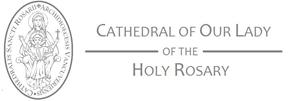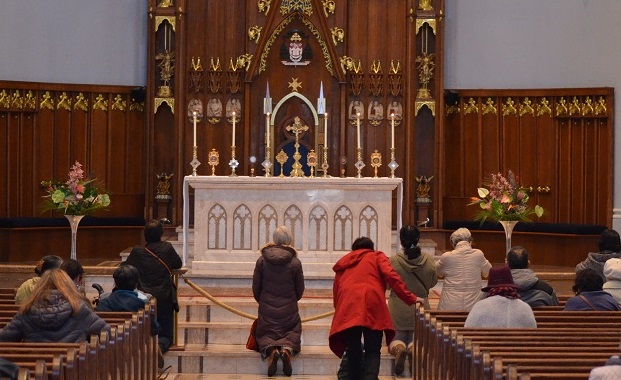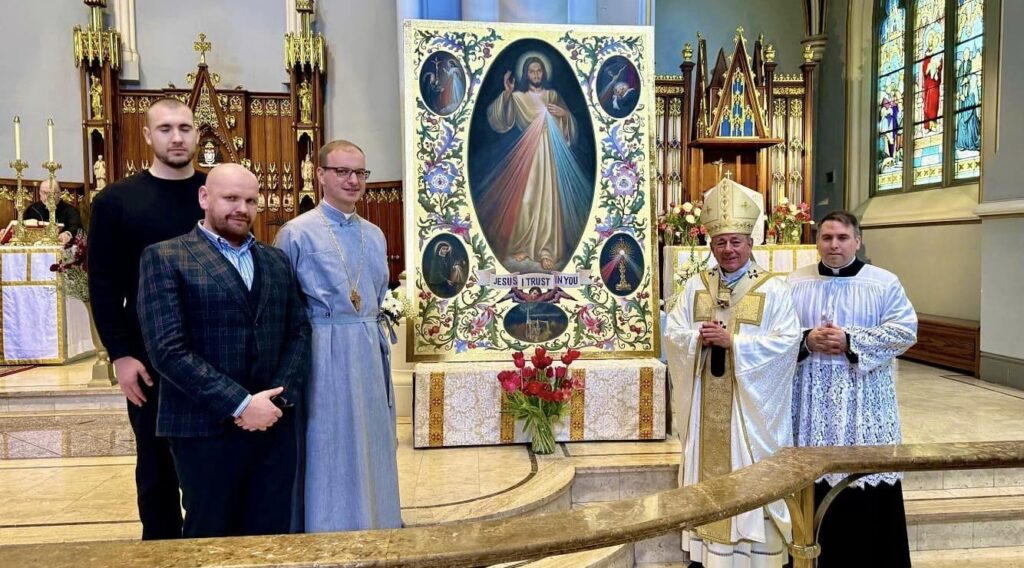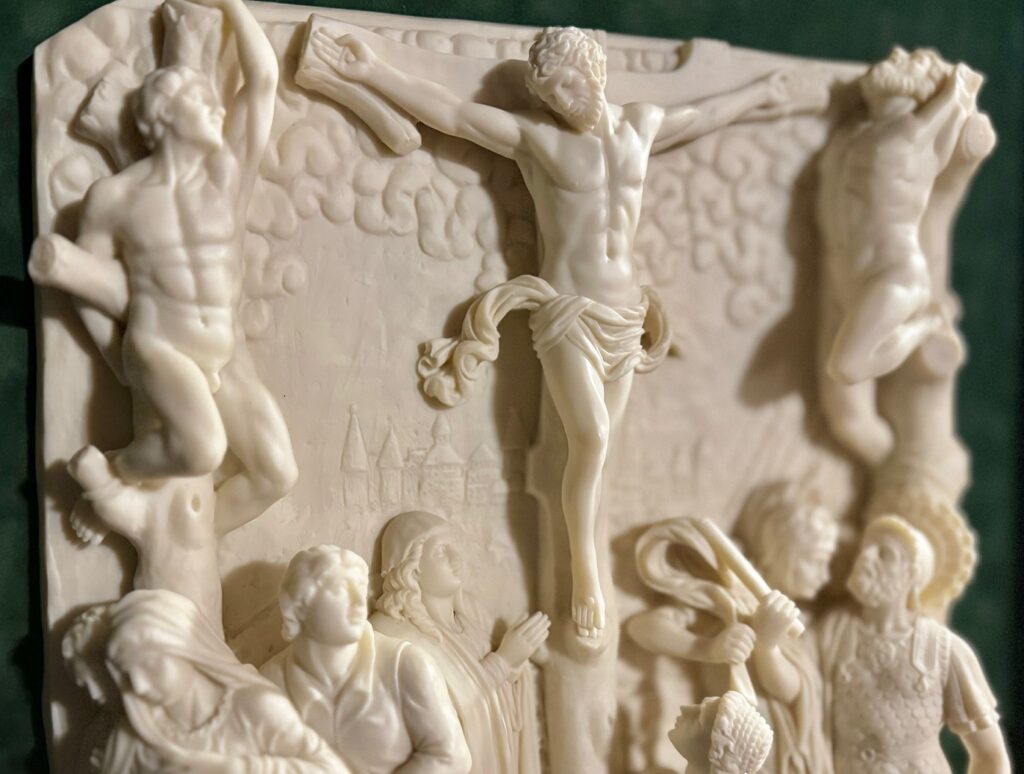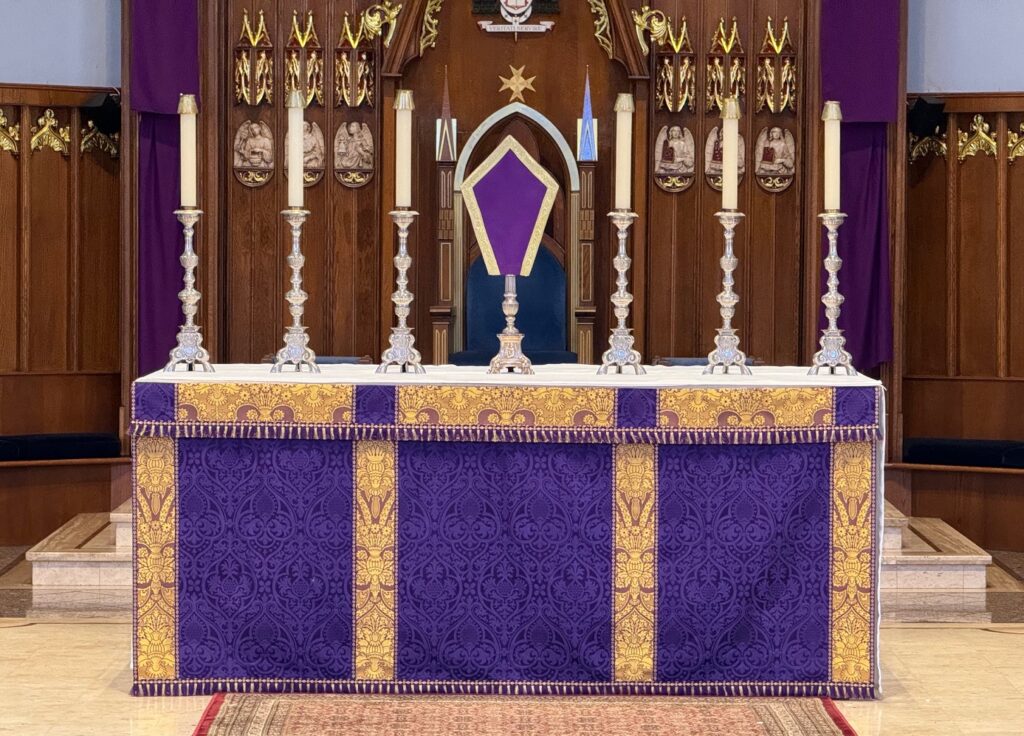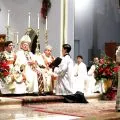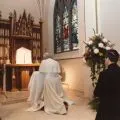The following is an article written by Father John Horgan in 2016 to explain the meaning of Relics in Catholic devotion.
T h e V e n e r a t i o n o f t h e R e l i c s of S a i n t s
On All Saints Day, it is customary for churches to place their relics of the saints on public view in the sanctuary or at the altar. Relics are the physical remains of a saint’s body or even clothing they have worn which become the object of our veneration or acts of holy respect. Their presence demonstrates that we are in a relationship with these heroes of our faith; they have left this world and entered the Kingdom, but they still remain close: we continue to enjoy their friendship and benefit from it. They pray for us and with us and hear the prayers we direct towards them. This is part of what we mean when we speak of “the communion of the saints” in the Creed.
The place of relics in the history and spirituality of the Catholic Church is often surprising to those who have not studied it before. In recent times, relics of saints have “gone on pilgrimage” themselves, being brought on tours around the world that have seen hundreds of thousands go to pray before them. In 2001, the reliquary of St. Therese of Lisieux came to Vancouver and created a remarkable impression on the local Church; later, relics of St. John Bosco and most recently St. Anthony have continued to express the closeness and compassion of the saints for the people of Vancouver.
But why do we honour their remains, now that they are living with Christ in heaven? Isn’t that morbid? Not when we remember that the body too is created by God and is an integral part of the human person. The saints in heaven are awaiting the resurrection of the flesh when our bodies will be returned to us, glorious and beautiful, to share in eternal happiness. In the meantime, our funeral customs, rooted in Jesus’ Resurrection, express the respect that we have for the bodies of all the dead and our own hopes for eternity.
But the bodies of the saints, the special friends of Christ, have always been honoured with religious care too. The Scriptures tell us how the disciples of St. John the Baptist retrieved his remains and buried them, according to Jewish custom. After the Resurrection of Our Lord, early Christians would often go to great risks to recover and bury the remains of the martyrs, who shed their blood for Christ. In keeping with Jewish practice, they would even gather up blood-stained earth and stones. Everything marked by the martyr’s suffering became precious, both as evidence and sign. Their tombs in the catacombs or underground cemeteries became places of commemoration, inspiration and pilgrimage.
The early great Fathers of the Church, including Sts. Augustine, Ambrose, John Chrysostom and many others attest to many miracles, healings and other deeds of power that occurred through the veneration of the relics. The nearness of the saint was expressed and communicated to the believer through the relic before him. The miracles confirmed that the saints were dwelling in Eternity but concerned with us here below and that the human body is sanctified through the incarnation of Christ and the good works that express the virtues of a soul. And not even death itself could overcome such power.
In later centuries, the bodies of the saints began to be transferred to churches where they could be safely and conveniently honoured. Soon, every altar was consecrated with a fragment of a martyr’s remains, as a link between the sacrifices of the first Christians and our churches and Masses today. And relics of later saints began to be cherished around the world in places that they had never known during their earthy lives.
As such, relics serve as powerful symbols of Christian life and instruments of our on-going communion between the saint (living in Christ) and the believer (living in the world).
In themselves, they may seem to be evidence of lifelessness and fragmentation, of change and even decay. But in the experience of the believer, they become the charged and dynamic signs of power, wholeness, continuity and transformed life.
On Monday November 1 after the Noon Mass and after the 6:30 PM Mass there we will time available for the veneration of the Relics kept at the Cathedral.
Fr. John Horgan, is a priest of the Archdiocese of Vancouver. He is the pastor of Immaculate Conception, Parish in Vancouver.
